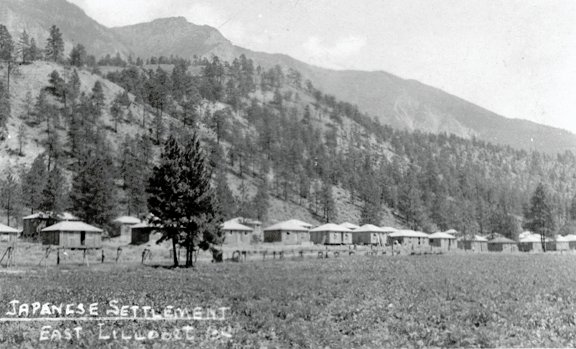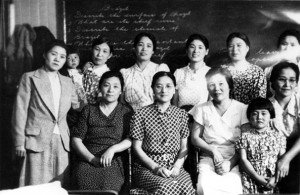
Photo: UBC special collections
By Eric Andersen
Published: Aug. 24, 2013
Immediately following the December 7, 1941 attack on Pearl Harbor, Canada was at war with Japan.
The 1941-45 war in the Pacific was to have implications at Squamish and in this region.
In 1957, the remains of another Japanese balloon bomb were found in a Squamish logging company’s timber claim south of Pemberton.
Around northern Howe Sound a substantial community of Japanese immigrants and Nisei (second generation Japanese-Canadians) had become established since the early 1920s – especially at Woodfibre, but also at Britannia and various logging camps.

Photo: UBC special collections
In June 1942, the federal government forcibly removed 22,000 Japanese-Canadians from the coastal areas of British Columbia and relocated them inland.
Many Howe Sound Japanese-Canadian families were relocated to a settlement camp near Lillooet, among other places.
Company #83 of the Pacific Coast Militia Rangers was formed at Squamish in 1942 to help monitor and guard the coast.
With its railway and marine facilities Squamish was a strategic harbour, and considered a potential bombing raid target. Therefore, a strict “lights out” policy was enforced through into 1945.
There were no bombing raids. However, between November 1944 and April 1945 more than 9,000 balloons carrying incendiary bombs were sent aloft from the Japanese island of Hokkaido to set forest fires, which would siphon manpower and resources away from the war effort.
Approximately 300 landed in North America.
In March 1945, one of these balloons landed on Gambier Island.
In April 1945, the Canadian military suggested to the RCMP that Japanese-Canadians should be interrogated about the balloons. The RCMP replied that any assumption that the Japanese maintain an espionage network in Canada “has no foundation and cannot be entertained in light of our experience.”
In 1957, the remains of another Japanese balloon bomb were found in a Squamish logging company’s timber claim south of Pemberton.


heather gee says
I’m sure very little was known regarding the Japanese culture at that time….